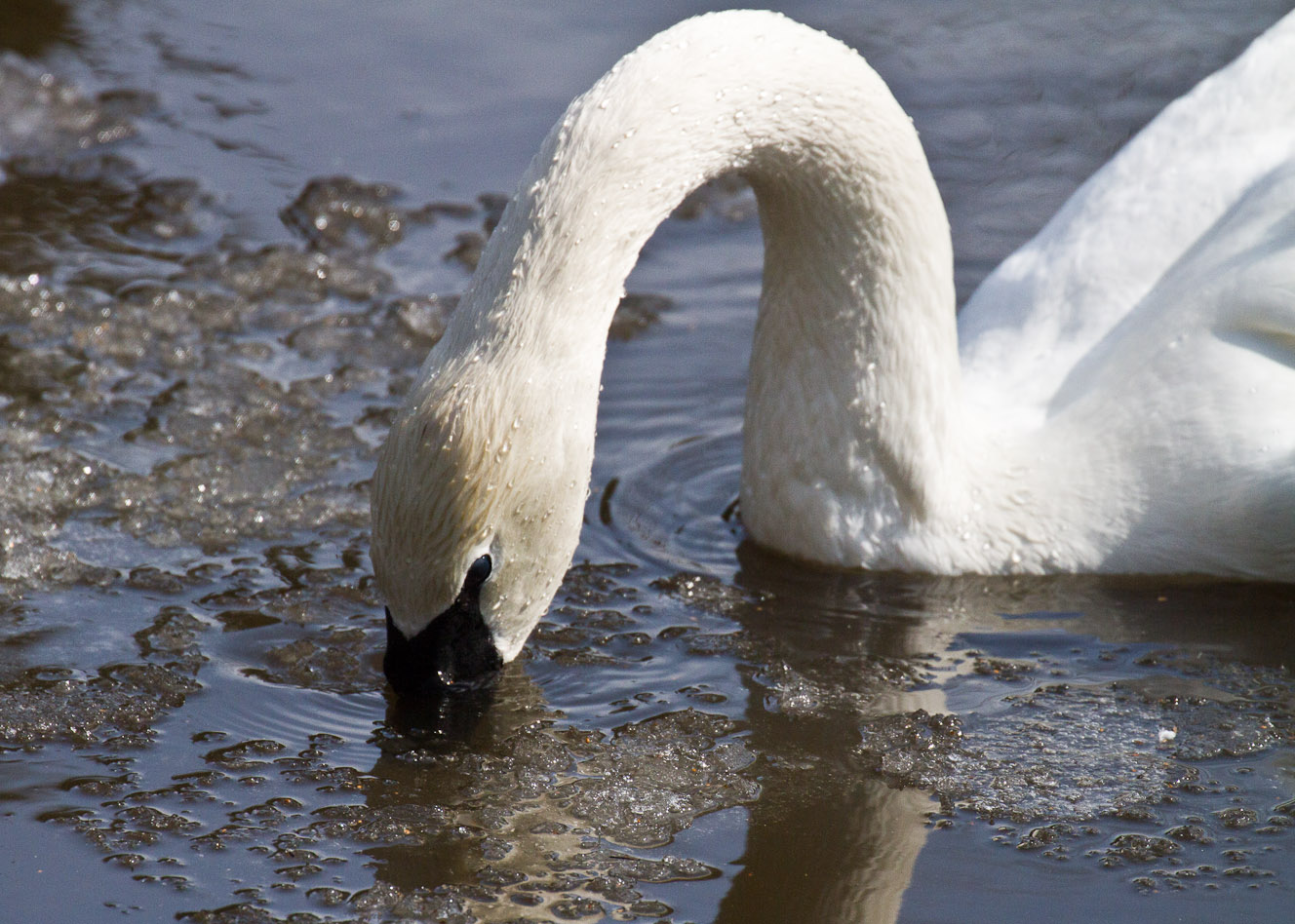Trumpeter Swan
We have resident trumpeter swans who stay at the Alaska Zoo year-round. Back to animal directory.
Our resident zoo swan pair has successfully hatched cygnets each year for the past few years. If you come by the creek at the back of the zoo, you will see their nest mound near the feeder. Many of the cygnets are sent south to a reintroduction program where they are released into a wild, migrating flock to join in annual migrations and contribute to wild populations.
Cygnus buccinator
LIFE SPAN: 20 years under human managed care.
RANGE: Trumpeter swans inhabit boreal forests between Yakutat and the Yukon River, breeding more toward Interior Alaska.
SIZE: Males average 28 pounds and females 22 pounds. Wing spans of 5 feet, with tundra swans being smaller on average than trumpeter swans.
PHYSICAL FEATURES: Largest members of the waterfowl group. Both sexes are all white. To distinguish between trumpeter and tundra swans, the best feature to look for is the bill. Tundra swans have a yellow/orange patch of color located at the base of the bill, adjacent to the eye. Trumpeter swans lack this characteristic, having an all-black bill.
FOOD: Swans eat aquatic plants, tubers, seeds, stems, and waste grains found in agricultural fields. They prefer to feed in shallow water, but can tip upside-down to retrieve plants in deeper water. They can eat an average of 20 pounds of aquatic plants per day.
BEHAVIOR: Swans mate for life. They build nest mounds 6 to 12 feet in diameter in undisturbed marshes adjacent to small lakes. Females lay 3 to 7 large eggs that measure up to five inches long. Males defend an established territory around the nest. Eggs hatch about 35 days after incubation. Cygnets (young swans) take up to 15 weeks to fly.
CONSERVATION: Populations have increased over the past 30 years due to close management. They are protected by the Migratory Bird Treaty Act.


